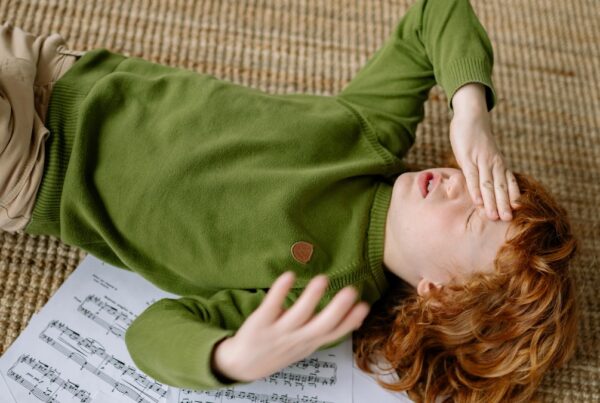Key Points:
- Bruxism, or teeth grinding, is more prevalent among individuals with autism and can cause long-term oral and behavioral challenges.
- Understanding sensory triggers, anxiety, and communication difficulties is key to managing bruxism in children with autism.
- A holistic approach combining dental support, behavioral strategies, and ABA therapy can significantly improve outcomes.
Bruxism and autism often go hand-in-hand, but that doesn’t make it any less concerning for parents. Whether it’s happening at night or during stressful moments, teeth grinding in kids with autism can affect their health and happiness. Thankfully, there are practical ways to manage it that fit into your daily routines at home.
What is Bruxism in Autism?
Bruxism in autism refers to the frequent grinding or clenching of teeth, often during sleep or periods of stress. It may be due to sensory processing issues, anxiety, or communication frustrations that are common in autistic individuals.
This condition can lead to jaw pain, headaches, tooth damage, and disrupted sleep—making it a critical issue for parents to address early. Understanding the underlying causes and implementing proper interventions can make a significant difference in the child’s comfort and quality of life.
If you’re seeking more insights on how developmental challenges like bruxism intersect with conditions such as autism and apraxia, be sure to check out our article, “How to Tell If It’s Apraxia, Autism, or Both.” It provides a comprehensive guide to understanding the overlap between these conditions and can help clarify common misconceptions.
Why is Bruxism More Common in Children With Autism?
The connection between bruxism and autism is more than coincidental—several underlying factors make children on the spectrum more likely to develop this condition.
Children with autism often have heightened sensory sensitivities. This means that sensations that might go unnoticed by neurotypical individuals, like the feeling of teeth alignment, jaw tension, or even noise, can be very noticeable or uncomfortable. Teeth grinding may be a way for a child to self-regulate, seek sensory input, or cope with overwhelming stimuli.
Additionally, communication difficulties, especially in nonverbal autistic children, can lead to frustration. Without a reliable way to express their needs or discomforts, they may engage in repetitive behaviors like grinding as a physical outlet. Bruxism may also increase during transitions or when routines are disrupted.
How Can Parents Identify Bruxism Early In Their Child?
Parents are often the first to notice signs of bruxism, especially during nightly routines or dental visits. Recognizing the signs early can prevent long-term damage and initiate timely interventions.
Here are some signs to watch out for:
- Audible Grinding: Especially during sleep or quiet periods.
- Jaw Clenching: Even when not eating or speaking.
- Tooth Damage: Flattened, chipped, or worn teeth without a clear cause.
- Morning Complaints: Headaches, jaw soreness, or discomfort after waking up.
- Unusual Facial Movements: Repetitive chewing motions or jaw tensing during the day.
- Changes in Eating Patterns: Avoiding hard foods or sudden, picky eating.
Look for both physical and behavioral cues. Some signs are obvious, like audible teeth grinding at night, while others are more subtle and easy to overlook if you’re not paying close attention.
How Can Bruxism Be Managed At Home?
Bruxism management starts at home with small, consistent changes. Parents can create a more predictable environment, offer sensory alternatives, and use daily routines to reduce stress.
Below are some effective home management strategies:
- Establish a Calming Bedtime Routine: Help reduce nighttime grinding by winding down with familiar rituals like soft music, dim lighting, or gentle massage.
- Use Chewable Jewelry or Safe Oral Stim Tools: These provide safe alternatives for oral sensory input during the day.
- Track Patterns: Use a journal or app to note when bruxism occurs—time of day, setting, food intake—to spot trends and potential triggers.
- Create a Low-Sensory Zone: Designate a quiet, dimly-lit space where your child can retreat when overwhelmed.
- Encourage Hydration and Proper Nutrition: Dehydration and nutrient deficiencies (like magnesium or calcium) can contribute to muscle tension and grinding.
- Talk to Your Child’s Dentist: Regular dental check-ups can monitor tooth wear and suggest protective measures like night guards.
By observing your child’s behavior closely and creating calming strategies, you can reduce the frequency or intensity of teeth grinding over time.
 Can ABA Therapy Help With Bruxism In Autism?
Can ABA Therapy Help With Bruxism In Autism?
Absolutely. Applied Behavior Analysis (ABA) therapy isn’t just for teaching daily living or social skills—it can also address behaviors like bruxism when it’s rooted in anxiety, sensory needs, or communication breakdowns.
With these ABA therapy techniques, professionals identify the function of the behavior and then work to replace it with more appropriate, less harmful alternatives.
- Behavioral Assessments: Pinpointing triggers and patterns through data collection.
- Replacement Behaviors: Teaching the child to use safer coping mechanisms, like requesting a break or using a sensory chew.
- Routine Development: Establishing predictable routines that reduce anxiety and improve emotional regulation.
- Parent Training: Helping caregivers respond effectively and consistently to bruxism episodes.
By combining ABA therapy with input from dentists and occupational therapists, families can address both the behavioral and physical sides of bruxism in autism.
When Should You Seek Professional Help?
While some bruxism may resolve with time, if the behavior becomes persistent or causes damage, it’s time to loop in professionals. Don’t wait until there’s visible harm—early intervention is always easier than treatment after damage has occurred.
It’s important to work with a team that may include your pediatrician, a dentist, an occupational therapist, and an ABA therapist. This multi-disciplinary approach ensures that the behavior is viewed through both medical and behavioral lenses.
ABA Therapy For Bruxism Management In Autism
Parents don’t have to manage this alone. If you’re noticing signs of bruxism in your child and it’s affecting their well-being, ABA therapy can play a pivotal role in reducing the behavior and supporting your child’s development.
At Crown ABA, we specialize in providing evidence-based ABA therapy tailored to each child’s unique needs—including behaviors like teeth grinding that stem from sensory issues, anxiety, or communication struggles. Our compassionate team works closely with families to implement real-world strategies that reduce harmful behaviors and encourage positive growth.
Crown ABA offers ABA therapy in Maryland, with services that empower families to manage challenges like bruxism with confidence and clarity. Get in touch with us and see how we can help your child find healthier ways to cope and thrive!





